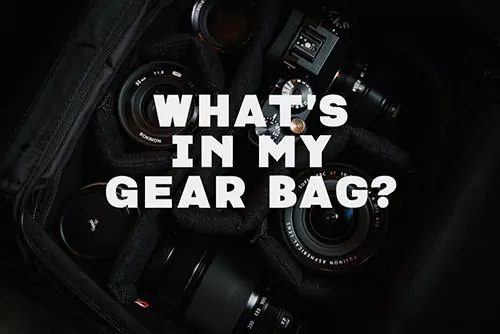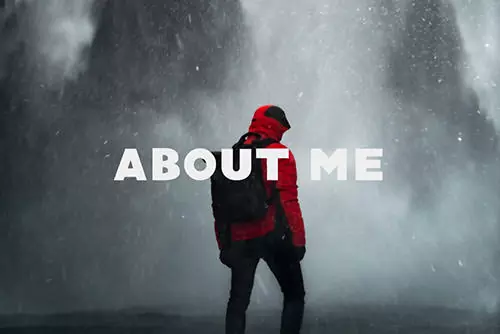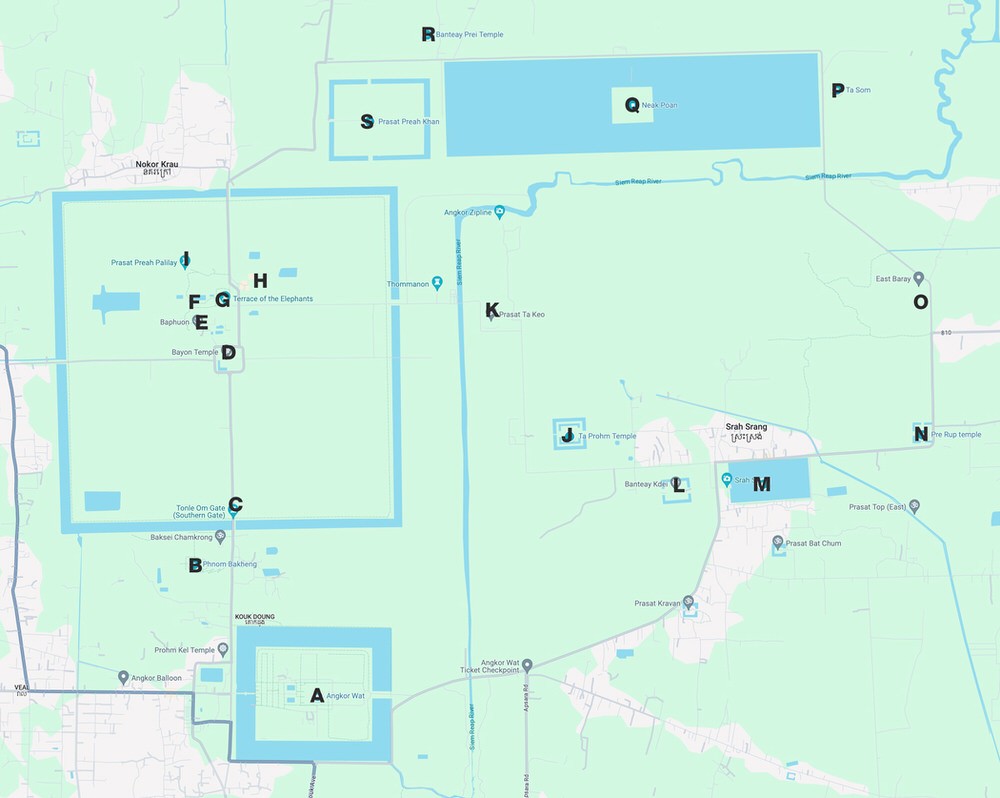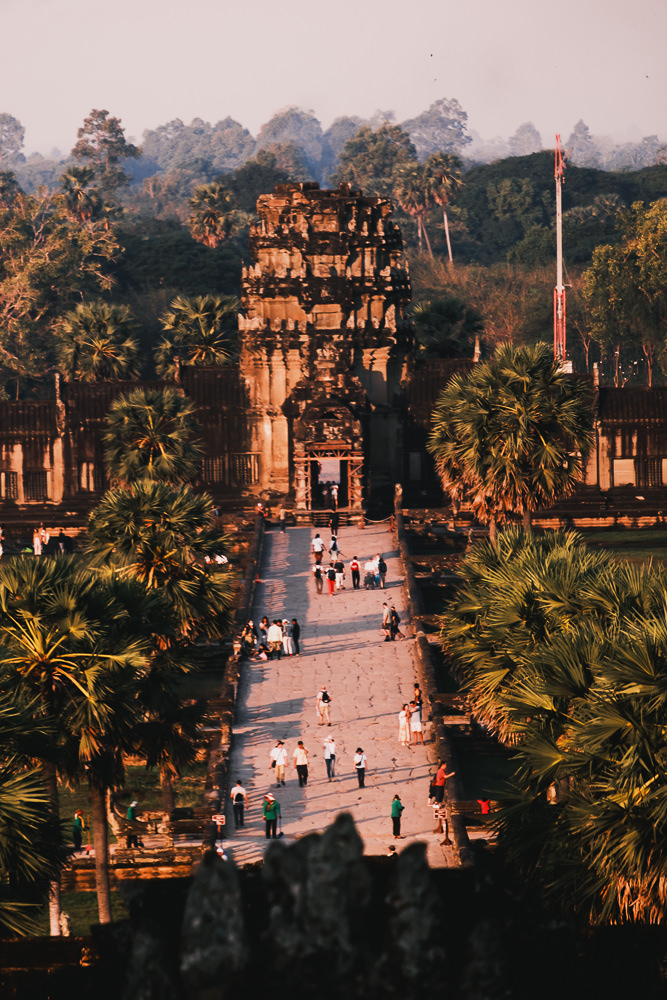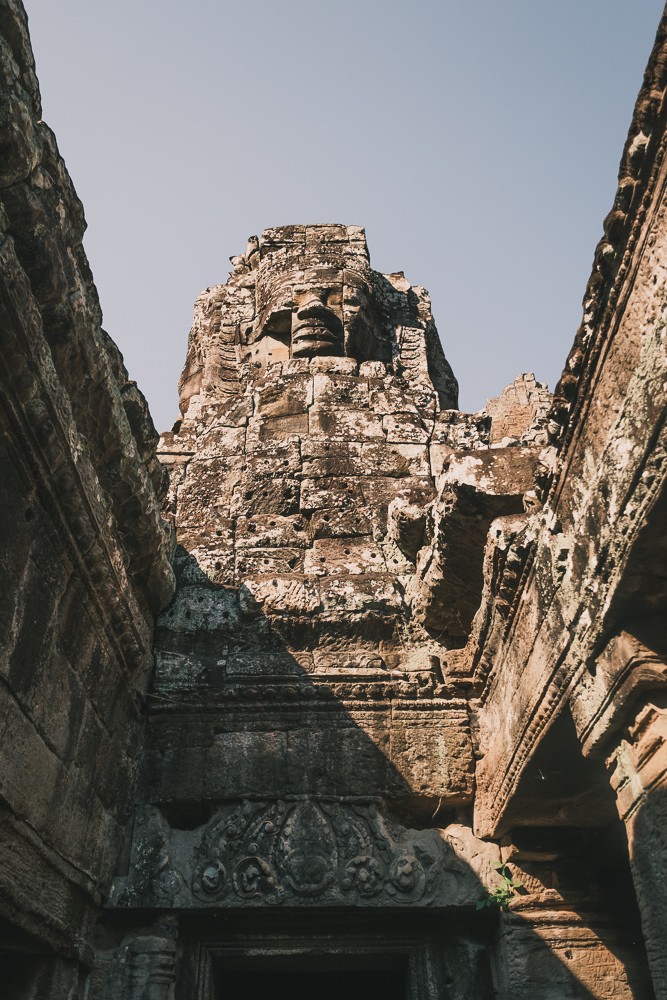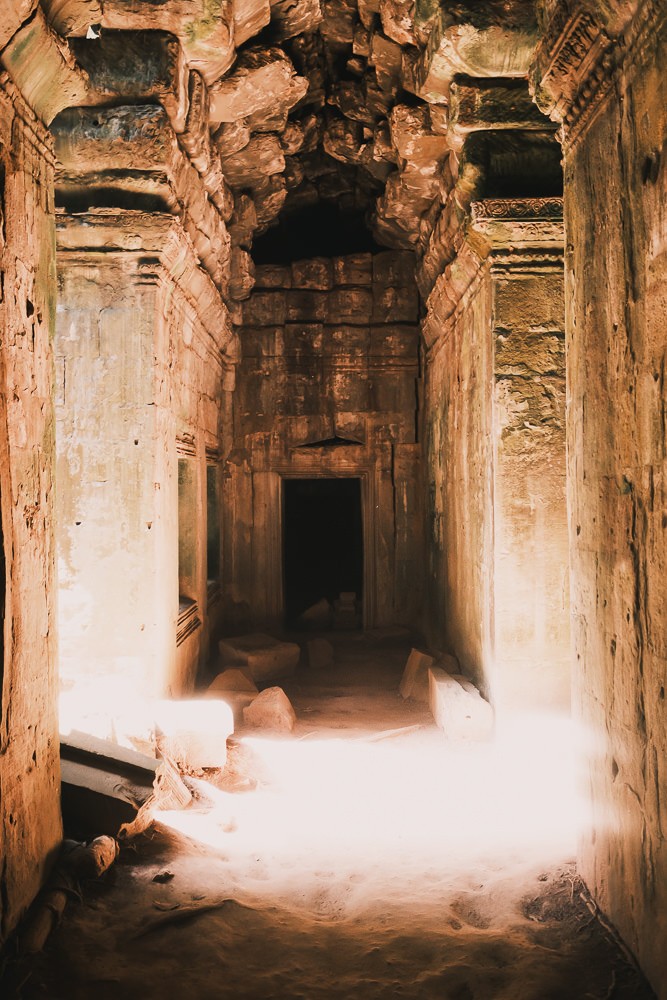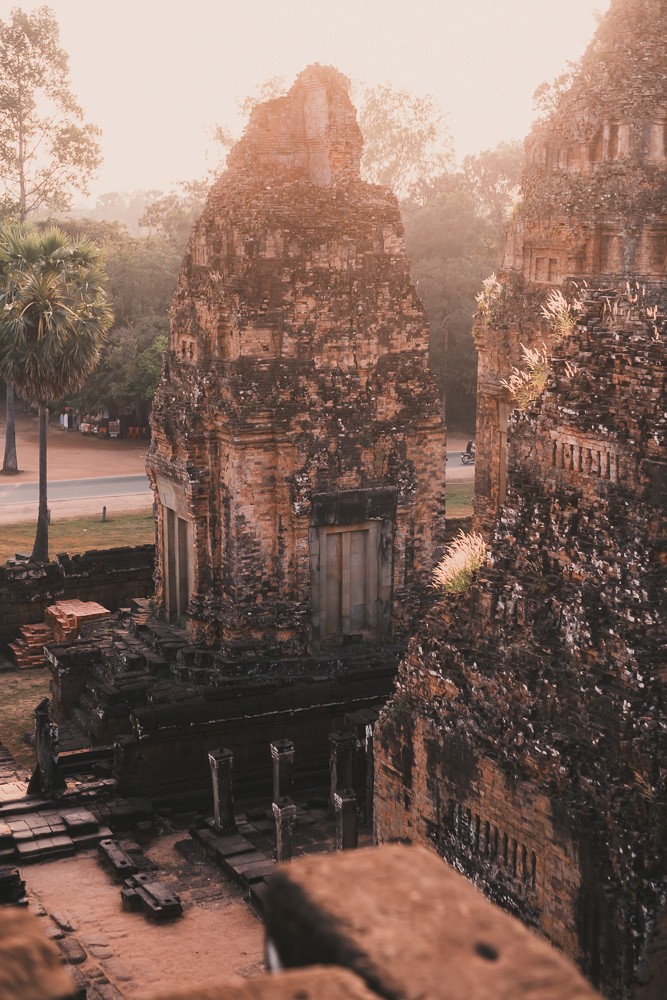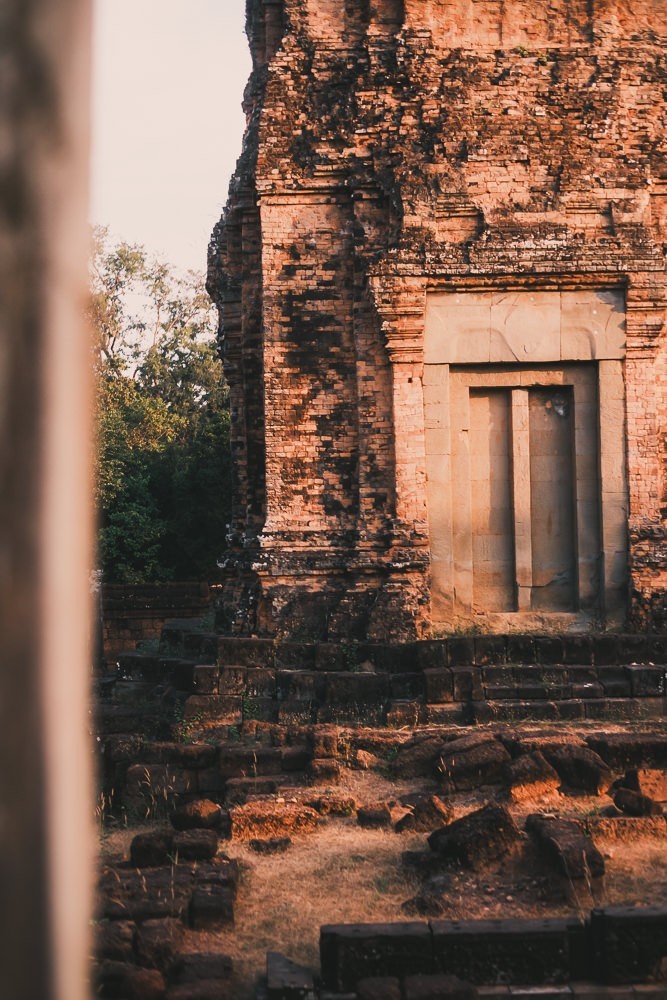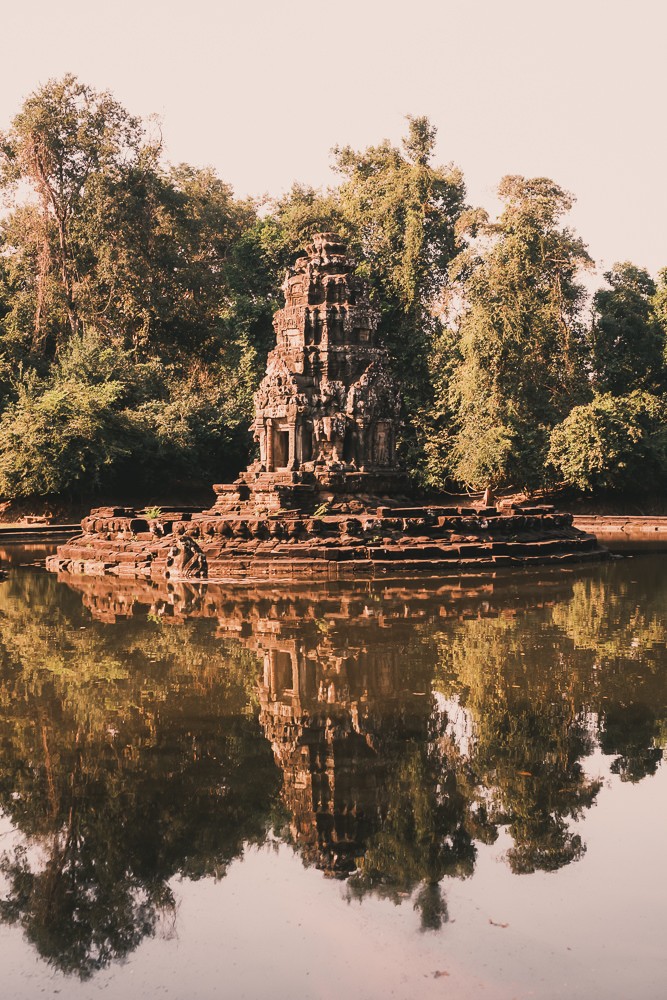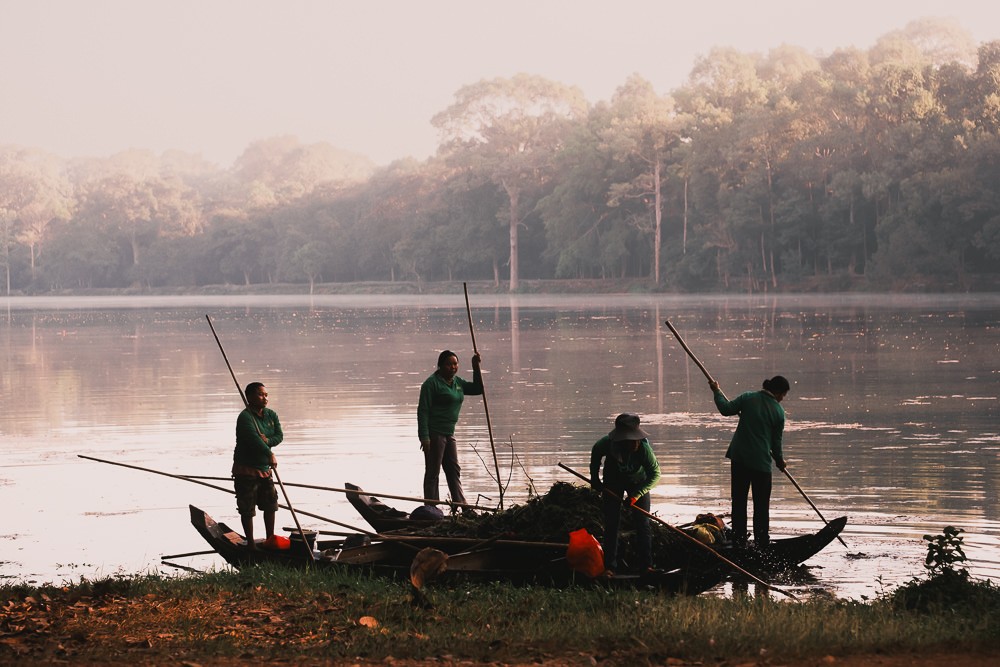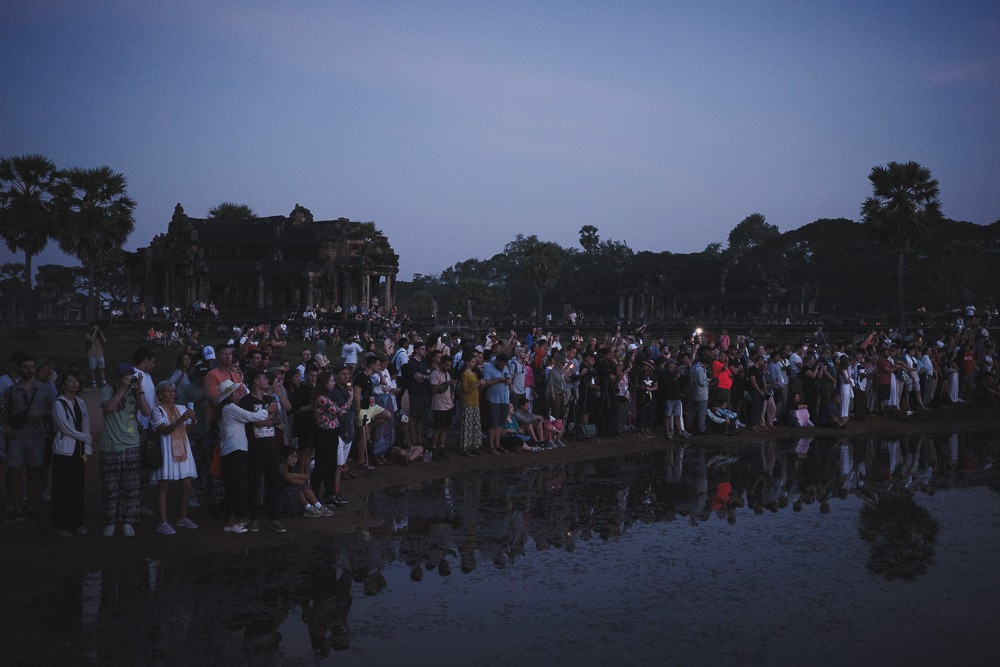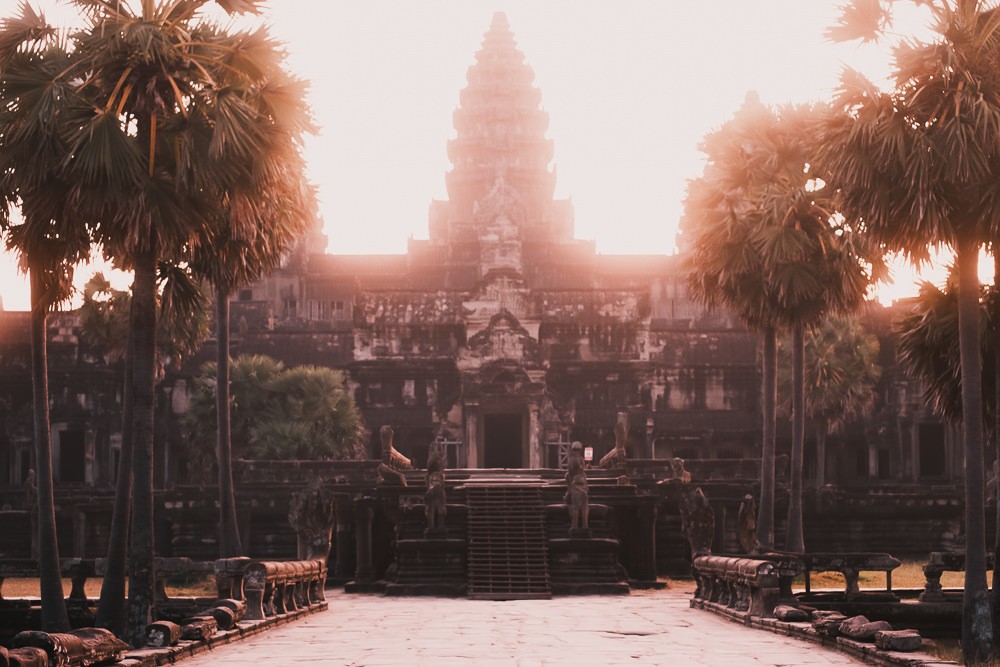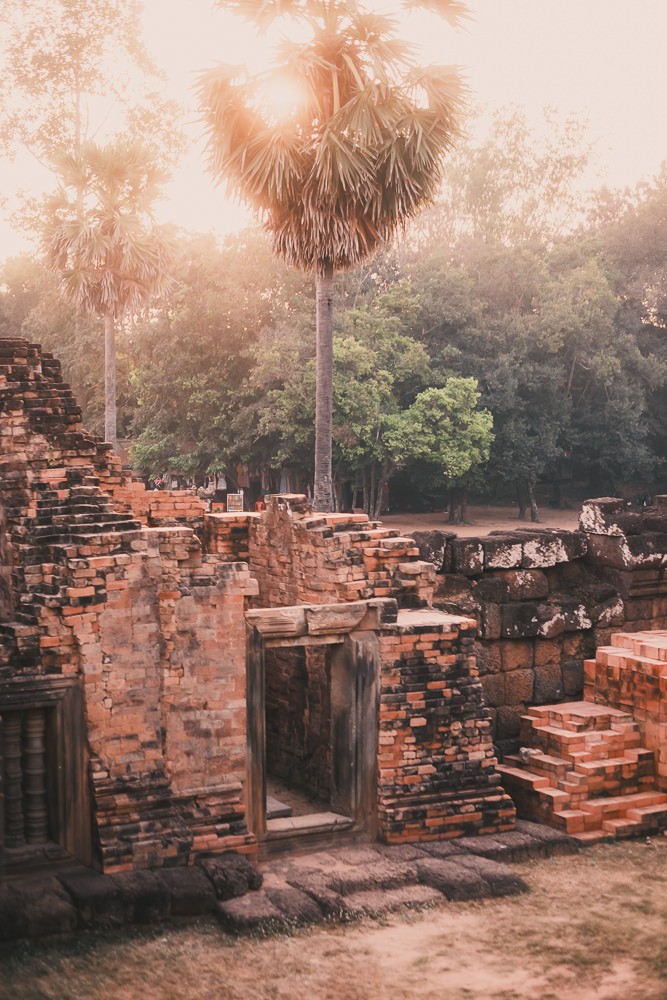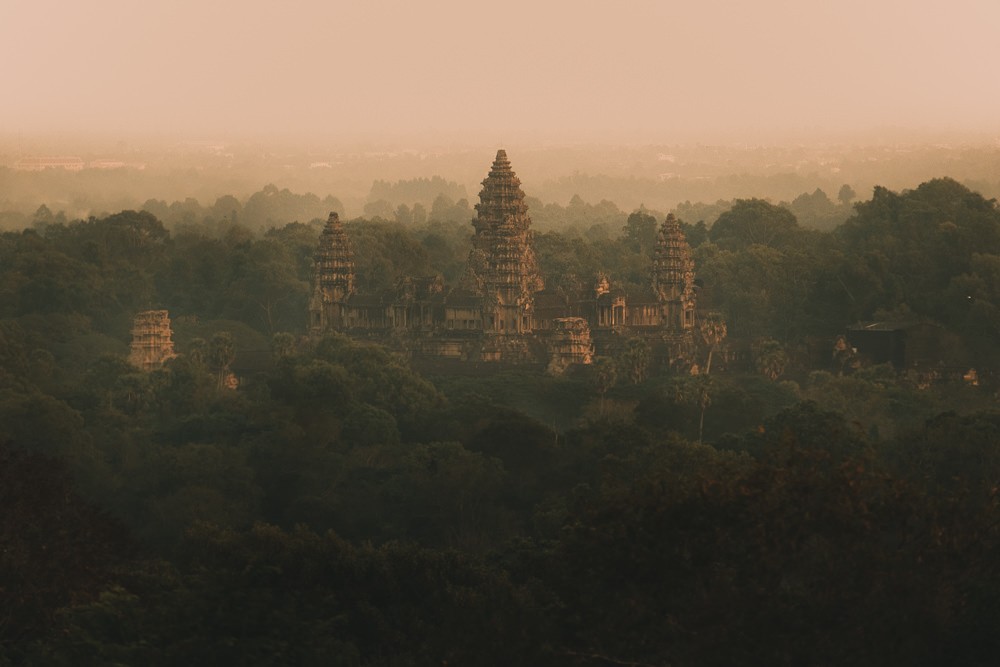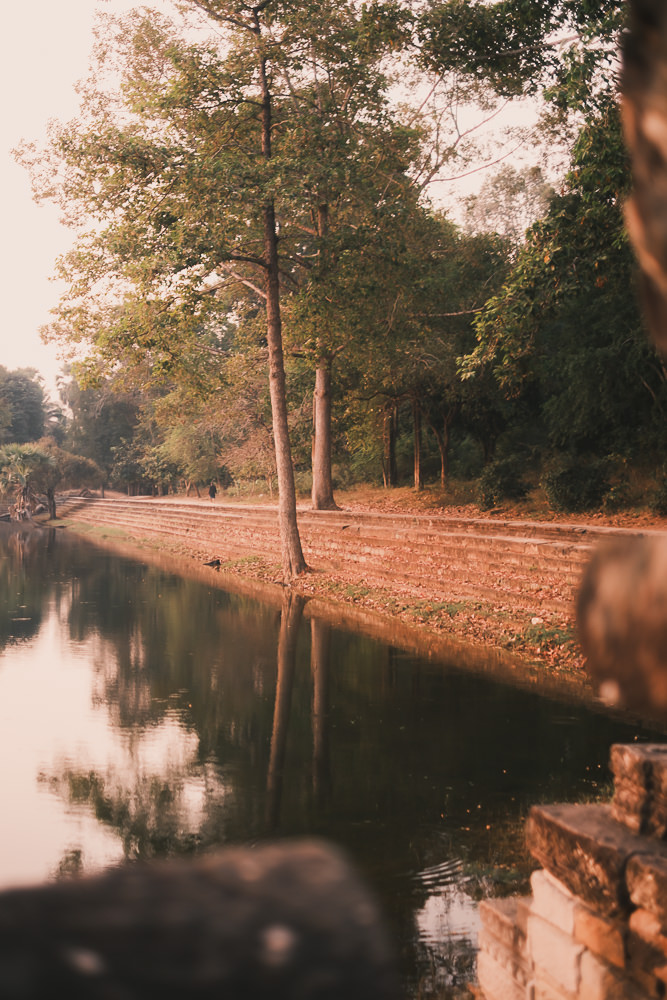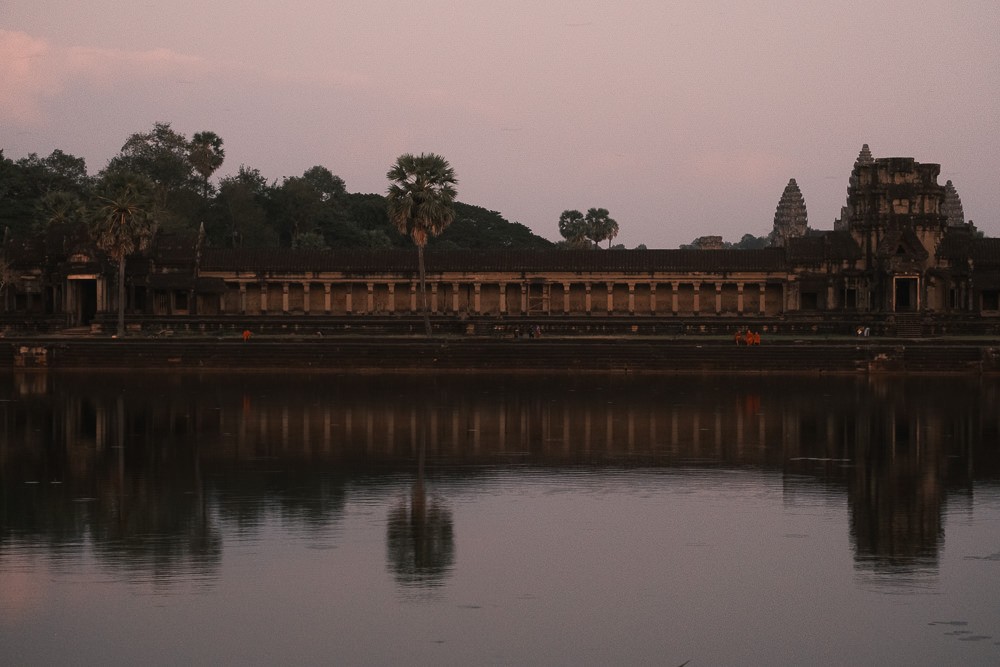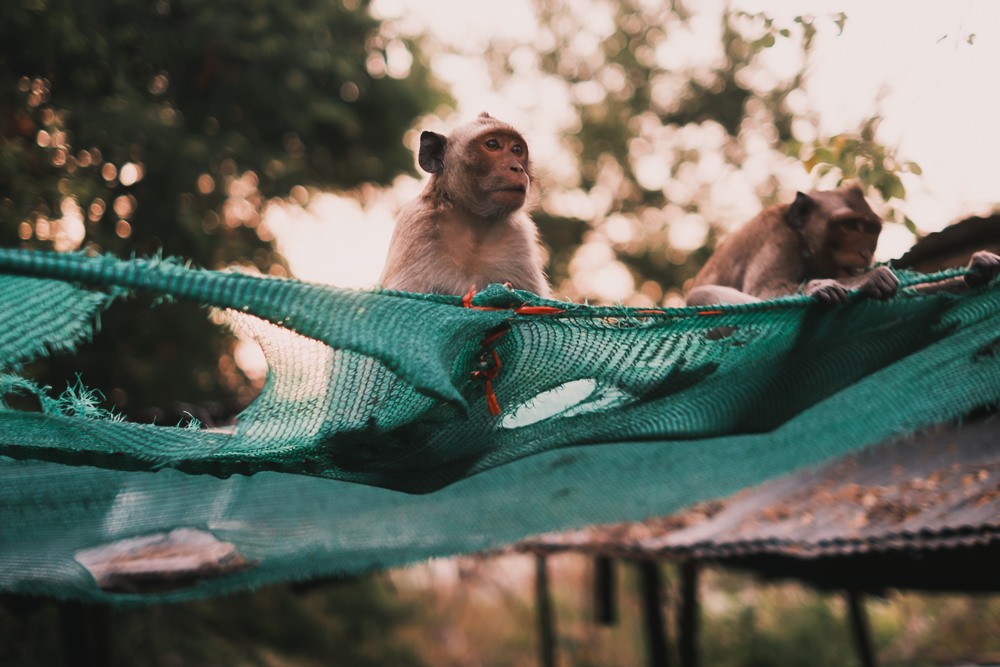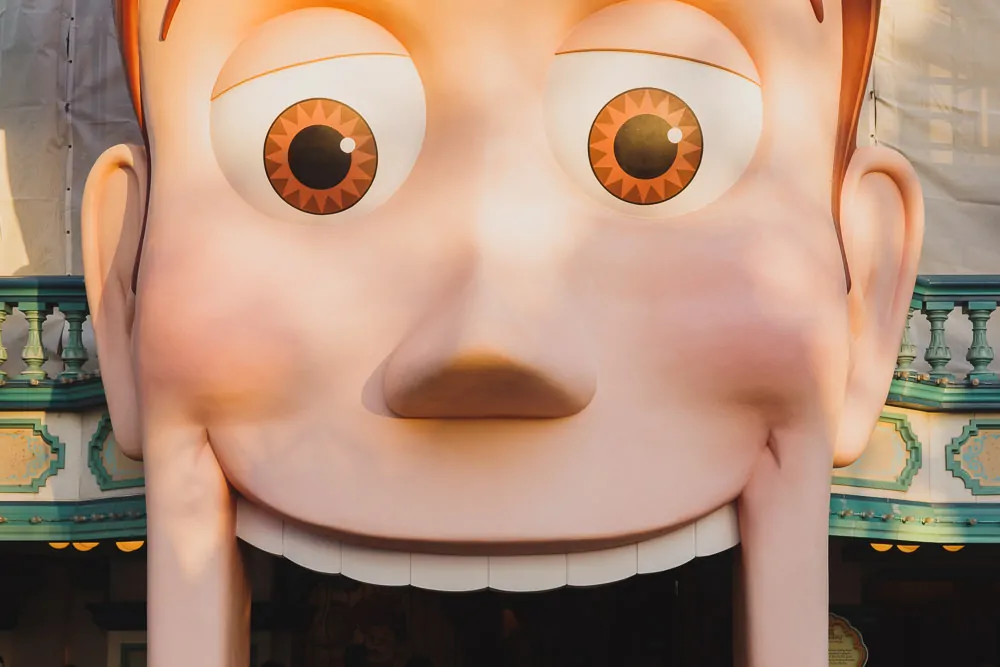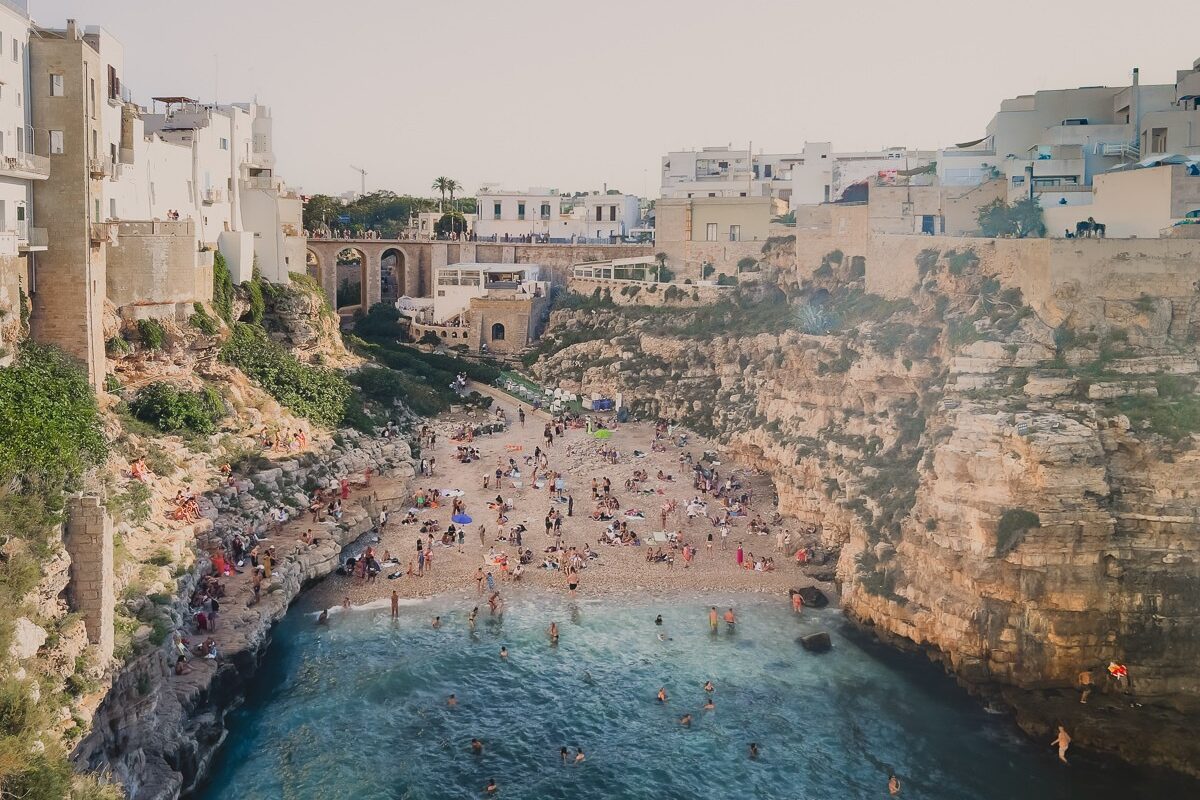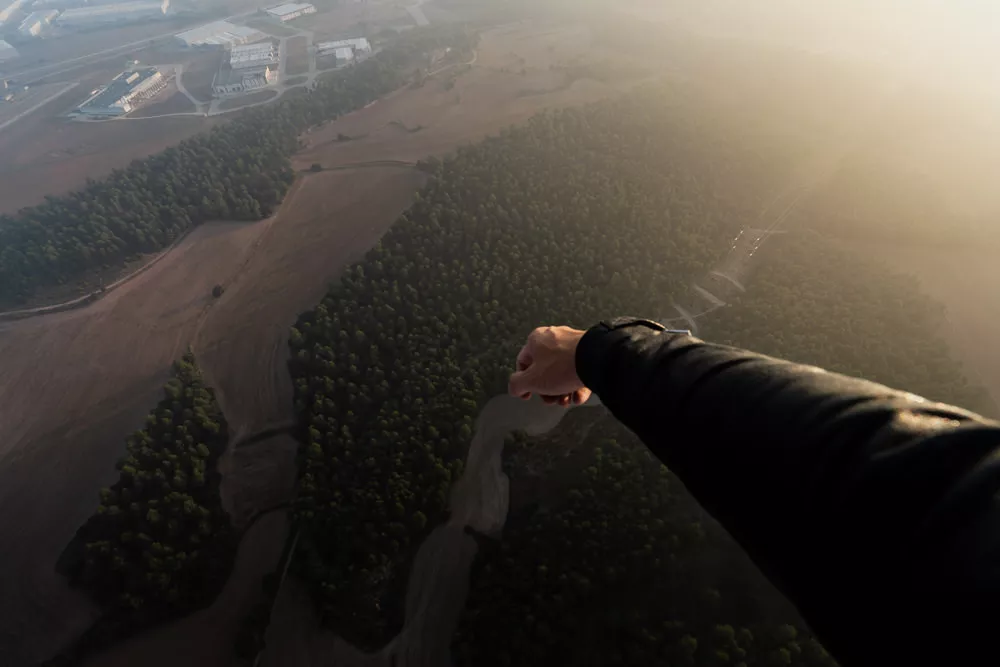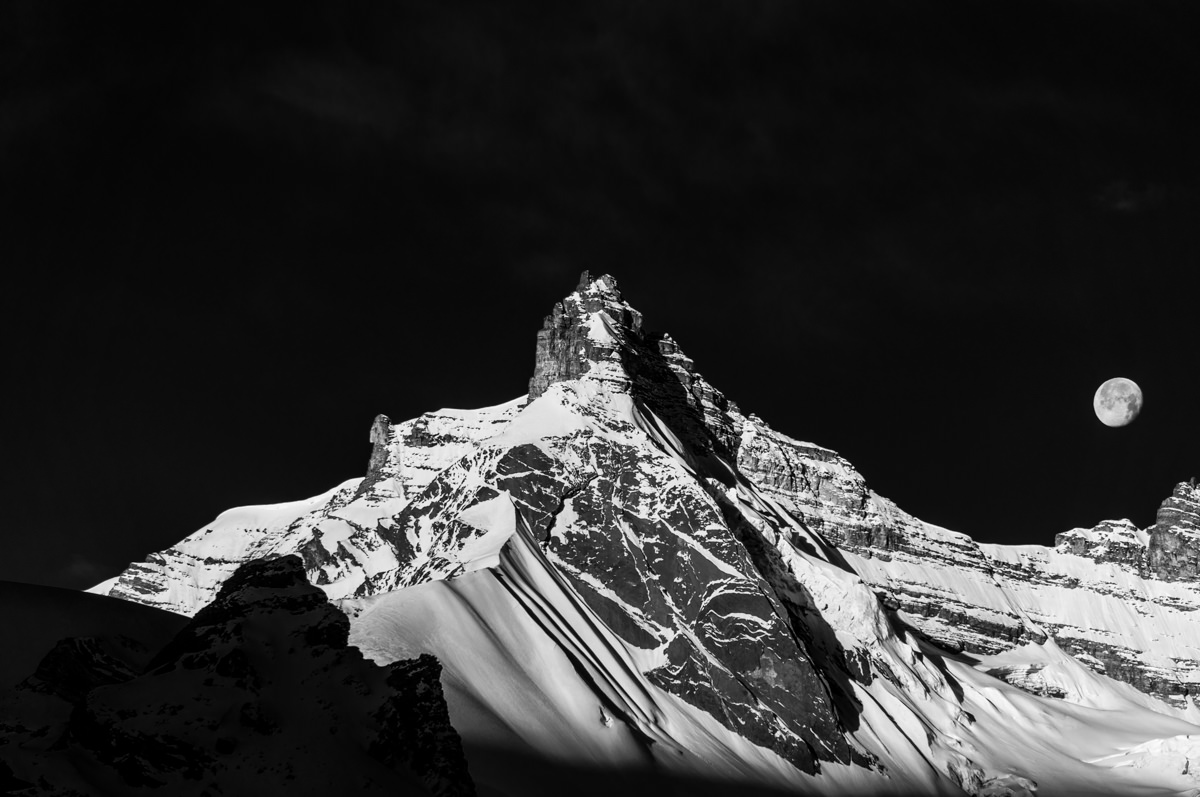Conquering Angkor Wat: The Cheat Sheet Guide To Cambodia’s Ancient City
Conquering Angkor Wat: The Cheat Sheet Guide To Cambodia’s Ancient City
Angkor Wat, the crown jewel of Cambodia’s ancient Khmer Empire, and the country’s main draw for millions of visitors each year.
Angkor, as a city, was an architectural marvel of its time, with advanced urban planning, highly skilled craftsmanship, and a sophisticated water management system. The longevity and endurance of Angkor’s structures across time are a testament to the ingenuity of its builders. A visit is a journey into history – deserving of all the hype.
But tackling Angkor Wat can be overwhelming if you don’t come prepared. I would know, I did it on the fly and there were things I wished I knew before I arrived.
Below is a cheat sheet to simplify your trip planning. So bear with me, don’t get overwhelmed by the names, and try to follow along. I’ll tell you everything you need to know in the next few minutes of reading.
Angkor Complex Overview | How Many Days Should You Visit? | Tickets | Recommended Route| Best Sunset Spots | Where To Stay | Best Time To Visit | Tips and Last Thoughts
Understanding the Angkor Complex: An Overview
The Angkor complex is massive, covering 400 square kilometers and including more than a thousand temples. You won’t come close to visiting them all nor need to. I found it all a bit overwhelming at first, but it’s a lot easier to plan your visit when you understand the main areas and proximity to each other.
Central Angkor (Small Circuit)
This is the main circuit that people visit and can be completed in one day. It might seem like a lot, but the temples in Angkor Thom are quite close to each other. I’ve listed them in the order you’d most likely visit.
Angkor Wat (A): The main temple and the most iconic. Nearly everyone will visit this place first thing in the morning.
Phnom Bakheng (B): A hilltop temple known for its panoramic views, particularly popular at sunset.
Angkor Thom: The last capital of the Khmer Empire. Angkor Thom is the central cluster of temples on most tours. You’ll enter through the impressive Tonle Om South Gate Bridge (C), and visit the Bayon (D), the main temple in the Angkor Thom complex, known for its towering faces. Bayon is part of the Big 3, along with Angkor Wat and Ta Prohm. People usually continue on a route that passes through Baphuon (E), Phimeanakas (F), the Terrace of the Elephants (G), Terrace of the Leper King (H) and sometimes Prasat Preah Palilay (I).
Ta Prohm (J): The “Tomb Raider” temple, famous for its intertwined trees and ruins and appearance in the Lara Croft movie.
Note: For most guests, visiting these three main temples above will be more than enough.
Prasat Ta Keo (K): A towering temple known for its height and steep steps.
Bantay Kdei (L): A Buddhist temple complex known for its extensive galleries and beautiful stone carvings.
Srah Srang (M): A large reservoir, known as the “pool of ablutions,” great for a serene sunrise or sunset
Eastern Angkor (Grand Circuit)
For those planning multi-day visits to Angkor Wat, a second day can be spent visit these sites. You can start at Pre-Rup or Srah Srang for sunrise and follow the route until Prasat Preah Khan, returning back to Siem Reap through Angkor Thom via the Northern Gate.
1. Pre Rup Temple (N): Popular for its brick towers and panoramic views. Recommended for sunrise or sunset.
2. Eastern Mebon (O): Originally an island temple, now surrounded by dry land.
3. Ta Som (P): Known for the giant tree growing on its eastern gate.
4. Neak Poan (Q): A unique temple set on an artificial island in the middle of a reservoir.
5. Banteay Prei Temple (R): A small and quiet temple near Preah Khan.
6. Prasat Preah Khan (S): A vast, maze-like complex with numerous carvings and corridors.
Northern Angkor
Between the Central and Eastern Angkor areas, you’ll probably have had your fill of temples. For those really interested in the temples and history, consider the hour long drive to Banteay Srei from Siem Reap. The temple is known for its exquisite pink sandstone carvings, but the longer driving distance makes this place less-frequented.
How Many Days Do You Need For Angkor Wat?
1-Day Pass: $37 USD. Approximately 50-60% of visitors opt for the 1-day pass. If you have limited time, one day is enough to see the major temples and a couple of smaller sites.
3-Day Pass: $62 USD. Around 30-40% of visitors choose the 3-day pass. This option is recommended if you want to explore the main temples as well as some of the lesser-known sites without feeling rushed. It’ll give you multiple opportunities for sunrise and sunsets at different locations.
7-Day Pass: $72 USD. The 7-day pass accounts for about 5-10% of sales. If you are staying in Siem Reap or Cambodia for longer, there’s no reason to not pay the additional $10 to explore all the temples. Photographers and history buffs will appreciate being able to return to locations multiple times at their own pace.
Note: The 3-day pass is valid for any three days within a 10-day period, and the 7-day pass is valid for any seven days within a month. This flexibility allows visitors to explore the complex at their own pace, accommodating breaks and other activities in Siem Reap.
For most people, one day is enough to see the Big 3 (Angkor Wat, Bayon, Ta Prohm), starting with Angkor Wat at sunrise and ending with sunset at Pre Rup or Bahkeng.
If you have time, I recommend the 3-day pass to break up your visits into smaller chunks. On my first day, I was incredibly tired by 10 am (we had a 4:30 am start) and cut my morning tour short. I remember walking from temple to temple like a zombie and hardly taking it in.
Luckily, I had purchased the 3-day pass, so I was able to take a nice afternoon nap and return at sunset. I split the other two days into short morning and afternoon sessions and thoroughly enjoyed each visit without feeling overloaded. On the 2nd and 3rd day, I was able to leisurely visit the temples on the Grand Circuit and return to see sunsets at Pre Rup and Srah Srang.
How To Buy Angkor Wat Tickets?
Buying Tickets Online
I recommend buying directly from the official ticketing website. The benefit is that you have an electronic copy of your ticket. If you lose a physical ticket, you will need to purchase a new one. Follow the process below:
1. Create an account.
2. Choose the Angkor World Heritage pass
3. Choose your ticket type and select the date you want to visits. Note: You need to buy your ticket at least one day in advance.
4. Submit your identification information, and upload a photo of your face following the instructions and select Add Ticket. Note: I got an error multiple times, for no logical reason, when uploading my photo, so keep trying.
5. Make your payment and you’re done.
Buying In-Person At The Ticket Office
You can buy your ticket in purchase at the ticket office below. Payment can be made in cash (USD, Cambodian Riel) and major credit cards are accepted. There’s one small benefit to buying the ticket in person. See the hack below.
Angkor Enterprise Ticket Office: This is the main ticketing office located on Road 60, about 4 kilometers from Siem Reap town center. The ticket office is open from 4:30 am to 5:30 pm every day.
PRO HACK: Tickets issued after 5:00 pm are valid for the next day. If you buy your ticket after 5 PM, you can use it to visit the temples that same evening. This is trick if you want to enjoy a free sunset visit at one of the popular spots like Phnom Bakheng or Pre Rup.
Showing Your Ticket
Be sure to keep your physical ticket or an electronic copy of your ticket on you at all times. If you have an electronic ticket, take a screen shot of the entire ticket and one of the zoomed in QR code.
There’s a ticket checkpoint before you enter the complex. Your guide or tuk tuk driver will stop here for your ticket to be scanned. If you’re traveling on your own, be sure you note the location and stop. You do not want to be chased down.
My ticket was checked several times at various temples.
Recommended Route and Options (1-Day Pass)
If you’ve planning to just buy the 1 day pass, I recommend either 1) joining a sunrise tour, 2) hiring a tuk-tuk driver to do the Small Circuit above, or 3) renting a motorbike and following this route.
Sunrise Tour
A typical sunrise tour will start at 4:30 am to get you there for the iconic sunrise by the reflecting ponds of Angkor Wat. You’ll have about 1.5 hours to walk Angkor Wat itself, allowing you to explore the intricate architecture and get up close with the detailed bas-reliefs. In total, you’ll spend around 3 hours at the main temple.
Next, you’ll enter Angkor Thom through the famous southern gate and visit Bayon Temple and the surrounding sites for approximately 1.5 hours. At the “Tomb Raider” temple, Ta Prohm, you can take a break and see the famous banyan trees twisted around the ruins. You’ll spend about 1.5 hours here before finishing with an hour-long visit to either Ta Keo or Banteay Kdei.
Most sunrise tours last around 8 hours and start at approximately $14.50 per person. These tours typically cover the Big 3 temples and include visits to a couple of smaller sites. I recommend going with a small group guided tour to learn about the history and significance of the temple. Alternatively, opt for this private tourwith Siem Reap Experiences and go at your own pace.
By Tuk Tuk
If you want to feel the wind in your hair, consider visiting the temples with a private tuk-tuk driver. The drivers will more or less follow a similar route with the sunrise group tours, but you visit at your pace in an open tuk-tuk.
You can find a driver on the streets and negotiate, but it’s so much easier organizing one online with an English speaking driver. Note, your driver is not a guide and will not visit with you. You can hire a guide at the sites if you’d like, but I’d recommend the option below.
For the best experience, book this privately guided tuk tuk tour. You’ll get to see Angkor by tuk tuk, but also have the insight of an English speaking guide. A Khmer breakfast and a visit to the local market is bonus part of this experience, but most importantly, you’ll be able to set a custom itinerary with your driver.
PRO TIP: Skip the sunrise in front of the reflecting ponds. It’s super crowded. Instead, stay near the entrance when the temple opens and be one of the first ones inside.
By Motorbike Or Bicycle
For the adventurous, rent a motorbike or bicycle and explore the temples on your own. This is perfectly doable, but personally I recommend this option only as an afternoon supplement to one of the tours or if you’re returning for more than 1 day.
I wouldn’t advise attempting to navigate around Angkor Wat in the dark (for sunrise), if you’re unfamiliar with the area.
Most places will rent a basic motorbike for about $10 per day. You will need to leave your passport as a security deposit. In some circumstances, you can negotiate to leave a large cash deposit.
I was told that the police do not check for international driver’s licenses or even a normal driver’s license, but I still prefer to carry both. I would not leave my driver’s license as a security deposit.
TIP: Pay attention where you park and listen if a park ranger tells you to move.
Overall Recommendation And Tips
If you’re on a budget, join a guided sunrise tour, otherwise, opt for a privately guided tuk tuk tour, and go at your own pace. I highly recommend having a guide for Angkor to learn about the ancient city and appreciate what you’re seeing. Otherwise, the entire complex can feel repetitive.
TIP #1: Don’t try to squeeze everything in and consider ending your tour an hour or two earlier. Take a long break in the afternoon and recover. Return in the afternoon by tuk tuk or motorbike to one of the temples to enjoy the sunset. You don’t need a guide for this second part of the day.
TIP #2: If you want to avoid the crowd at sunset, consider Pre Rup Temple or Srah Srang. See below for my sunset spot recommendations.
TIP #3: If you don’t care for getting up at 4:30 am, consider this full day sunset tour. You visit in reverse starting with the Angkor Thom temples, visiting Angkor Wat in the afternoon when it’s less crowded, and ending with sunset at Bahkeng.
Best Spots for Sunset in the Angkor Complex
I had the 3-day pass and made sure to return each day to capture that golden glow of dusk. The magical ambiance is the perfect end to a day. Here are the top spots to spend your Angkor sunset:
Be sure to have a look at my masterclass guide to photographing Angkor Wat and find some inspirations and tips for your own photos.
1. Pre Rup Temple
Pre Rup Temple is another spot I pinned and returned for sunset when I visited in the morning. Its high platforms and brick towers catch the light beautifully when the sun begins to dip. The temple’s elevated position provides a great vantage point and it was a lot less hectic than Bakheng. Recommended Choice.
2. Phnom Bakheng
Phnom Bakheng is perhaps the most popular spot for sunset. The hilltop temple offers panoramic view of the Angkor complex, including Angkor Wat in the distance. It’s where I took the photo below. Arrive early to secure a good spot because it gets crowded. The climb is steep, but once you’re at the top, the 360-degree views are breathtaking, especially as the sun sets.
3. Srah Srang
Srah Srang is a large reservoir that provides a serene setting for sunrise and sunset. I came here for sunrise and had it all to myself. When I returned for sunset, there were more people, but it’s a lot quieter than the other spots. The reflections of the sky on the water was stunning. The view from the landing platform is enchanting, and the simplicity and tranquility of this place is the perfect way to end your day.
4. Angkor Wat
Most people visit at sunrise, but you can do the opposite. Come for the golden hour before sunset if you want some that beautiful glow to your photos. If you stay, I’d position yourself on the western side of the temple to get the best views.
5. Phnom Krom
Phnom Krom is a lesser-known spot that’s located further out near the Tonle Sap Lake. If you have the extra time and want to go somewhere different, this temple on a hill could be it. It’s a bit of a trek to get there, so how you get there and back is important in deciding to visit.
Where To Stay In Siem Reap
With the current exchange rate, your money goes a long way in Cambodia. Quality accommodations can be found for as cheap as a $5 USD and a night at one of the top luxurious hotels below runs between $150 – $250 a night. There’s something for everyone and if there’s ever a destination to splurge, it is Siem Reap. I can’t emphasize enough how nice it is to have a mid-day break for Angkor and resting in your air-conditioned room or by a pool.
The Best Luxury Hotel In Siem Reap
Raffles Grand Hotel d’Angkor
It’s hard to be Siem Reap’s premier hotel, the Raffles Grand Hotel d’Angkor for its timeless elegance and colonial charm. This historic gem offers lush gardens, a stunning pool, and impeccable service – a perfect sanctuary after a day exploring the temples. The service is top-notch as you would expect from a hotel that belongs in a different era of hospitality.
FCC Angkor By Avani
The Avani brand never disappoints in Asia. The FCC Angkor by Avani is modern sophistication at its finest. Located in the heart of Siem Reap by the river, it combines contemporary design with cultural heritage, featuring stylish rooms, a vibrant restaurant and a tropical pool oasis.
Sofitel Angkor
If you’re looking for colonial French elegance and Khmer hospitality, Sofitel Angkor is my recommendation. Luxurious accommodations, a world-class spa, and an 18-hole golf course set are just part of the offerings at this upscale hotel. Staying here is like stepping back in time.
Mid-Range Hotel Recommendations For Siem Reap
The Nature
This boutique hotel offers a serene atmosphere, organic gardens, and a gorgeous pool, providing a peaceful escape that harmonizes with Siem Reap’s natural beauty.
The Urban
The Urban is all about chic, contemporary living With its modern amenities, a rooftop pool, and a central location, it’s hard to beat this boutique hotel for its value.
Grand Yard La Residence
Luxury and comfort on a budget. Despite the lower price point, this elegant hotel offers spacious suites, top-notch amenities, and a tranquil garden setting. The pool set amidst the palms is perfect for cooling off in the afternoon between visits to Angkor Wat.
People by The Community
This socially responsible hotel offers comfortable rooms, great local hospitality, and a convenient location. By staying at People, you’ll also contribute positively to the local economy and help the hotel support local communities through various initiatives.
The Best Hostels In Siem Reap
Onederz Siem Reap
Easily the top hostel for backpackers or anyone wanting a social vibe while exploring Angkor. This upscale hostel features a rooftop pool and a restaurant side pool on the main floor. The restaurant serves up some cheap and delicious cuisine.
Lub D Cambodia
Between Onederz and Lub D, the latter has a more social vibe with a large swimming pool right in the center of the hostel. The dorm beds are comfortable and private. There’s always an event every evening and they can help book any activity around Siem Reap and Angkor.
Seasonal Guidance: Best Time To Visit Angkor Wat
Dry Season (November to March)
Pros: This is the most popular time to visit Angkor Wat due to the cooler and drier weather. Temperatures are comfortable, making it ideal for exploring the temples all day. Clear skies provide excellent photography opportunities.
Cons: Expect larger crowds and higher prices for accommodations and tours.
Hot Season (April to June)
Pros: The temples are less crowded, and you can enjoy a more peaceful experience. Hotels and tours may offer lower rates.
Cons: Temperatures can soar above 40°C (104°F), making it challenging to explore the temples comfortably. Staying hydrated and taking frequent breaks in the shade and temples are essential.
Rainy Season (July to October)
Pros: The landscape becomes lush and green, and the moats and reservoirs fill with water, adding to the beauty of the temples. Fewer tourists mean a more serene experience, and accommodation prices are lower.
Cons: Rain and sudden downpour can disrupt your plans and make moving around difficult. Paths can become muddy and slippery, so sturdy footwear is recommended.
Handy Tip & Tricks and Last Thoughts On Angkor Wat
1. Just Get An eSIM
I normally buy a local physical SIM card whenever I land, but in Cambodia, it was just easier to activate an eSIM plan through Ubigi or Airalo. If you’re planning on staying more than 2 weeks, then it might be worthwhile to get a physical SIM.
TIP: Use code KIEN0079 to get $3 off your first eSIM from Airalo. Use code 184BKGAW to get 20% off your first eSIM from Ubigi.
2. Use Maps.me
Even with data for my phone, reception and coverage can disappear in parts of the Angkor Complex. I recommend using the Maps.me app and downloading an offline map of Cambodia ahead of time.
3. Take Breaks
Break up your visit into manageable chunks. Take long breaks or go back to Siem Reap to avoid the midday heat and lull. It’s only a short ride away. Have a nap, take a dip in the pool, or get a massage. Then return in the afternoon refreshed.
4. Mind The Monkeys
They’re adorable and photogenic, but the monkeys around Angkor Wat can be mischievous. Keep an eye on your stuff and don’t feed them. They’re not as bad as some of the monkeys in Thailand and Indonesia, but they will snatch sunglasses, food, objects, and even your camera.
Be sure to check out my photography guide for Angkor Wat if you’re interesting to getting unique photos.
Looking for more travel inspirations? Scroll through some of the 450+ experiences on my bucket list. Maybe you’ll find your next adventure on there.
How You Can Help
If you’ve found the content useful, you can help support this site by using these links when you plan and book your trip.
| Booking.com | Agoda.com |
| Amazon.com | Klook.com |
| Viator.com | GetYourGuide.com |
Updated on November 16, 2024




